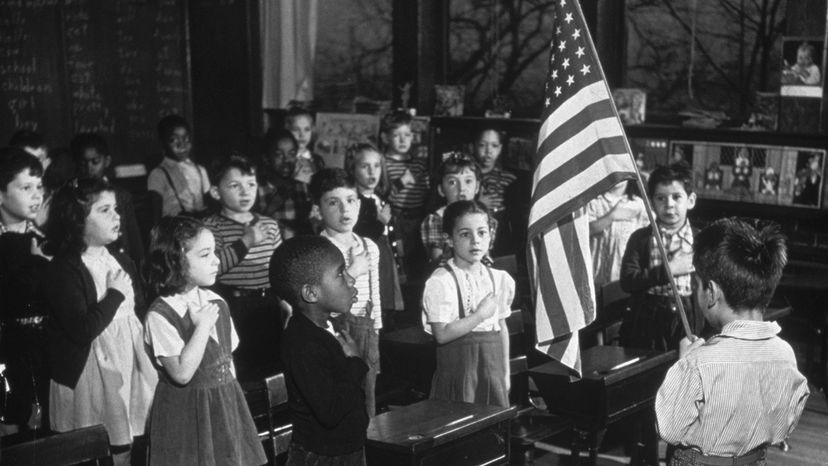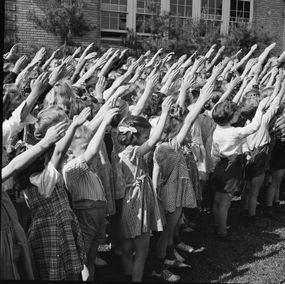
Every American schoolkid can recite the Pledge of Allegiance by heart, even if they have no idea what "indivisible" means or they think the whole thing is a tribute to some guy named "Richard Stans."
The author of the Pledge, which was originally written as part of a patriotic marketing campaign, would likely be amazed that his 22-word statement — which did not include "under God" — remains a classroom staple more than 125 years after its creation.
Advertisement
The Pledge of Allegiance was written in the late 1800s, a time of tremendous social upheaval in the United States. Industrialization drew masses of people away from farms and into crowded cities while an unprecedented wave of immigrants, most of them penniless and uneducated, poured in from Europe. Like today, politicians and public opinion were split on the threat immigration posed to what it means to be "American."
In 1892, a former Baptist pastor named Francis Bellamy was working as an assistant editor at a magazine called the Youth's Companion, a national publication for kids and their parents. Bellamy was also a Christian Socialist, a group striving to create a more just and equitable society through Christian values. Bellamy believed that one of the best ways to "Americanize" and peacefully incorporate these waves of immigrants was through patriotic programs in the public schools.
The very idea of public schools hardly existed in America before the Civil War, says Charles Dorn, a professor of education at Bowdoin College in Brunswick, Maine and co-author, with Randall Curren, of "Patriotic Education in a Global Age."
"The 1870s and 1880s were really the first time that people began thinking of public schools as a place where you can do things to create a better society," says Dorn. "For example, you can create more patriotic Americans if you get them when they're young and you start teaching them to be loyal to the United States."
Even though Bellamy was a fan of patriotism in public schools, he didn't write the Pledge of Allegiance with the notion that it would be recited daily by every school kid in America. His most pressing concern was selling magazines.
Advertisement



